
E Major pentatonic FINGERSTYLE GUITAR LESSONS
The E Major is a seven-note scale. Notes are displayed in the fingerboard diagram with blue color with the root notes indicated by darker color. The root notes are always E tones. In the two-octave pattern, the first root note is on the 6th string, 12th fret. Full fretboard E Major 2 octaves
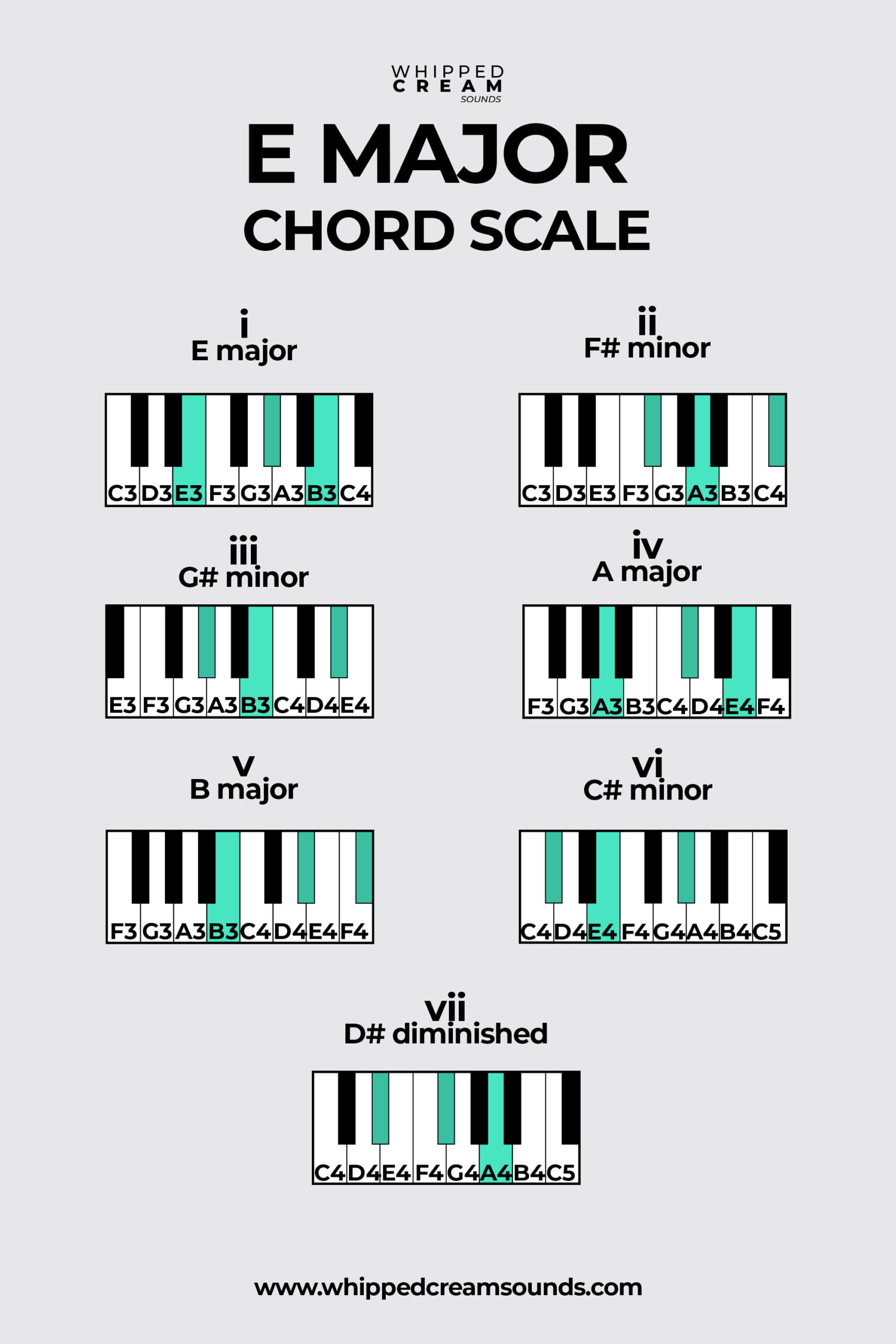
E Major Chord Scale, Chords in The Key of E Major
E Major Scale In this lesson we will learn how to play the E major scale. We will take a look at the notes of this scale, its intervals, degrees, modes, relative minor, diatonic triads, fingering and more. We will take a look at diagrams of this scale on the piano keyboard, treble and bass clef.
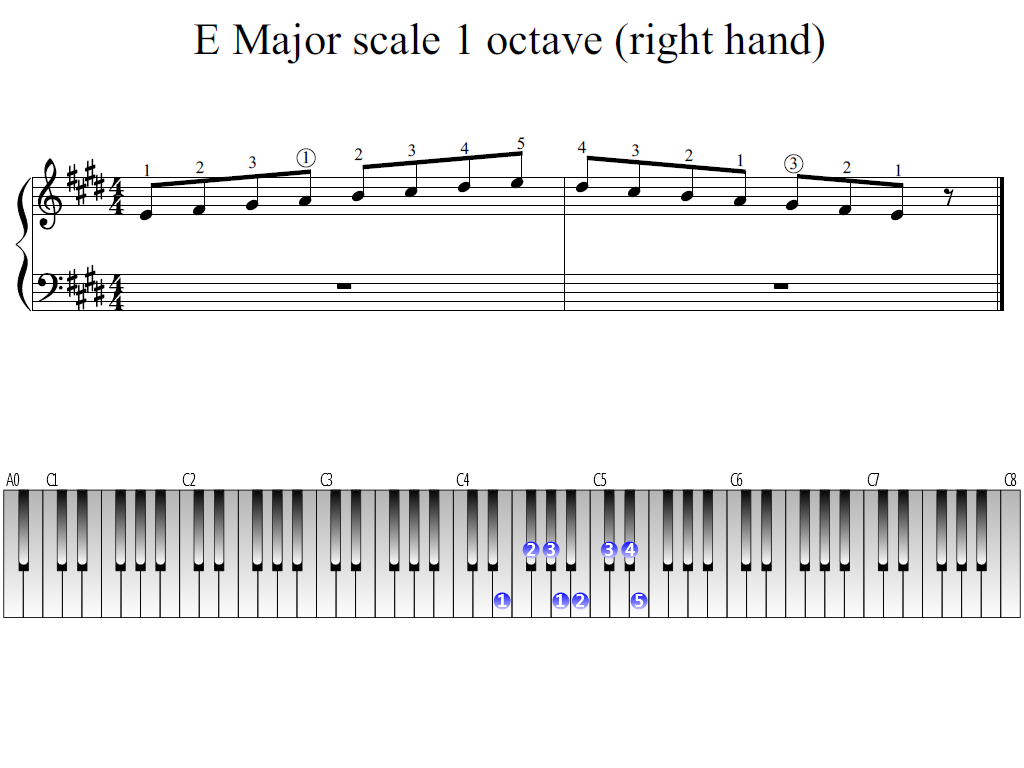
E Major scale 1 octave (right hand) Piano Fingering Figures
E Major Scale on the Violin: 2-octave Scale. The two-octave E Major scale combines playing in the first position and the third position. First, play one octave in the first position till the C# note. After that, shift to the third position with your first finger and play D. Play E with your second finger in the regular position, and to play F#.

E Major Scale and Key Signature The Key of E Major Chords Chordify
The E major scale contains 4 sharps: F#, G#, C#, and D#. The scale of a piece of music is usually indicated by a key signature, a symbol that flattens or sharpens specific lines or spaces on the staff.

E major scale for piano Piano scales, Piano, Learn piano
The E Major Scale is a fairly common scale you'll see used on a lot of popular songs. It may not be as common as E Minor (G Major), but it's a good scale to learn on guitar. This guide covers open chords, note positions on a fretboard diagram, popular songs in E Major, and everything else you might want to know about the scale.
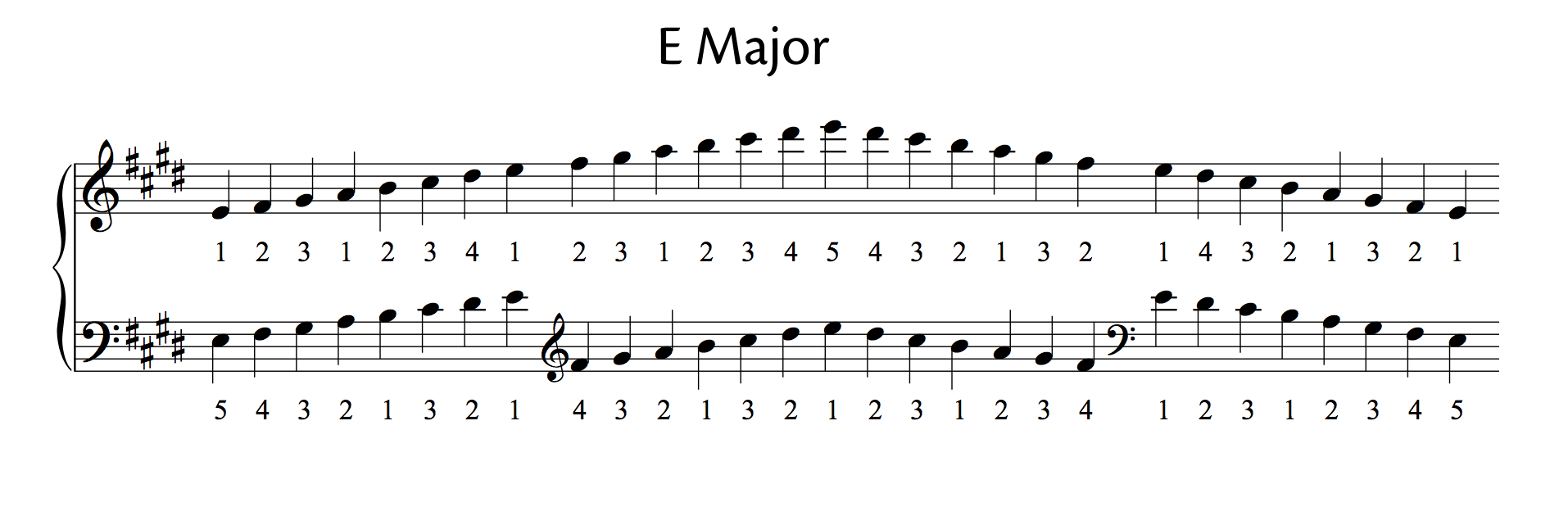
All Major And Minor Scales (including fingering for piano) OKTAV
An E major scale comprises the following notes: E, F#, G#, A, B, C#, D#, and E (octave). You'll likely practice this scale from the root note — E — to the octave, but I recommend running it from bottom to top from each of the notes. When you treat those notes like roots, you practice alternative scales to E major, including several minor keys.

E major scale guitar AmarGuitar
The E major scale is a diatonic scale consisting of the pitches E, F♯, G♯, A, B, C♯ and D♯. Its relative minor is C ♯ minor. The E major scale has a key signature of 4 sharps: F ♯, C ♯, G ♯ and D ♯. The key of E major is closely related to the key of A major and the key of B major. → go to all major & minor scales

E Major Scale A Complete Guide
The E major scale is made up of seven notes starting on E (which is known as the keynote). It then follows the major scale formula of whole and half steps. Those notes are: E F# G# A B C# D# As you can see, it has four sharp notes: F#, C#, G# and D#. E Major in the Treble Clef
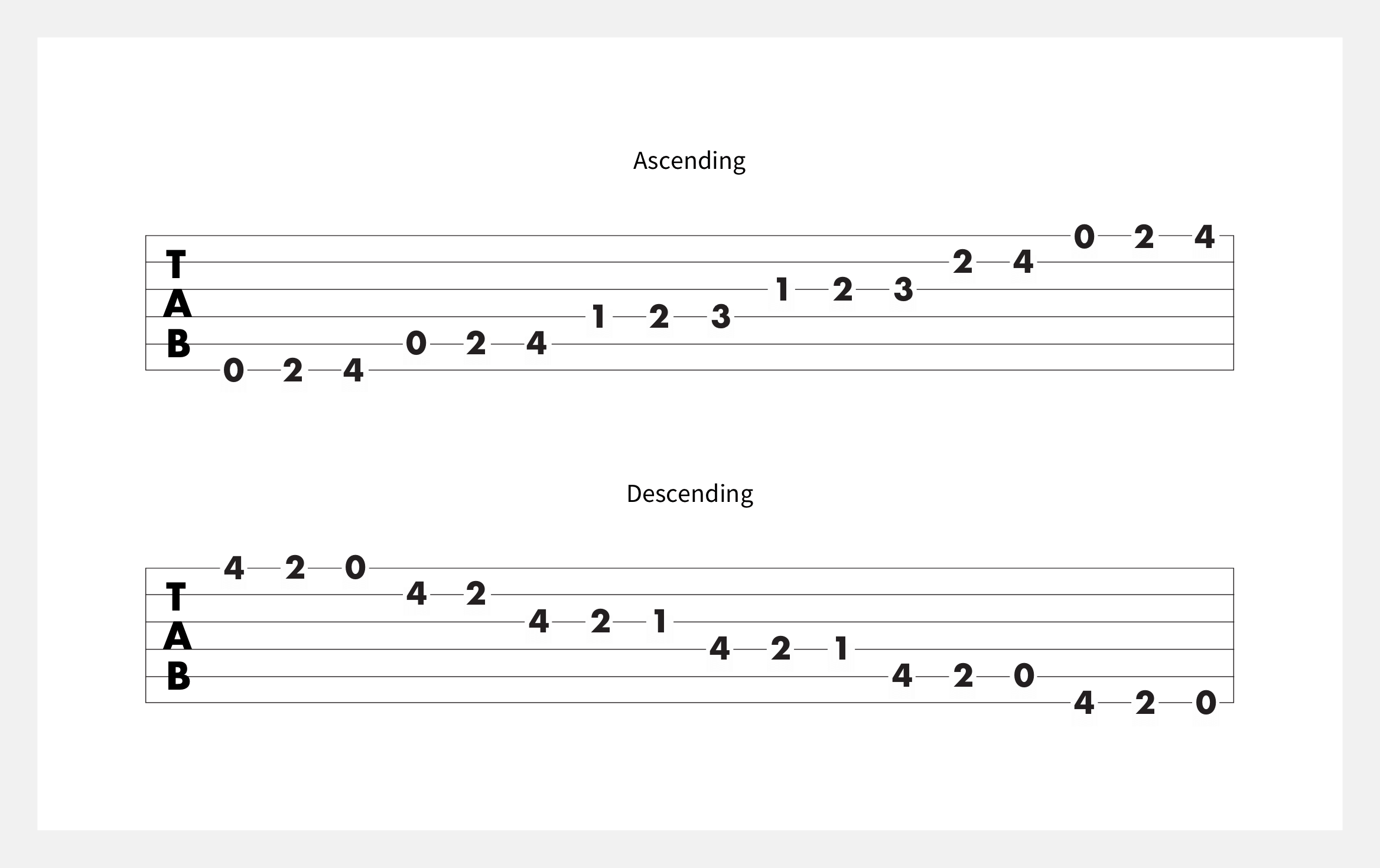
Learn How to Play the E Major Scale on Guitar Fender
E major scale This step shows the ascending E major scale on the piano, treble clef and bass clef. It also shows the scale degree chart for all 8 notes. The E major scale has 4 sharps. This major scale key is on the Circle of 5ths - E major on circle of 5ths, which means that it is a commonly used major scale key.
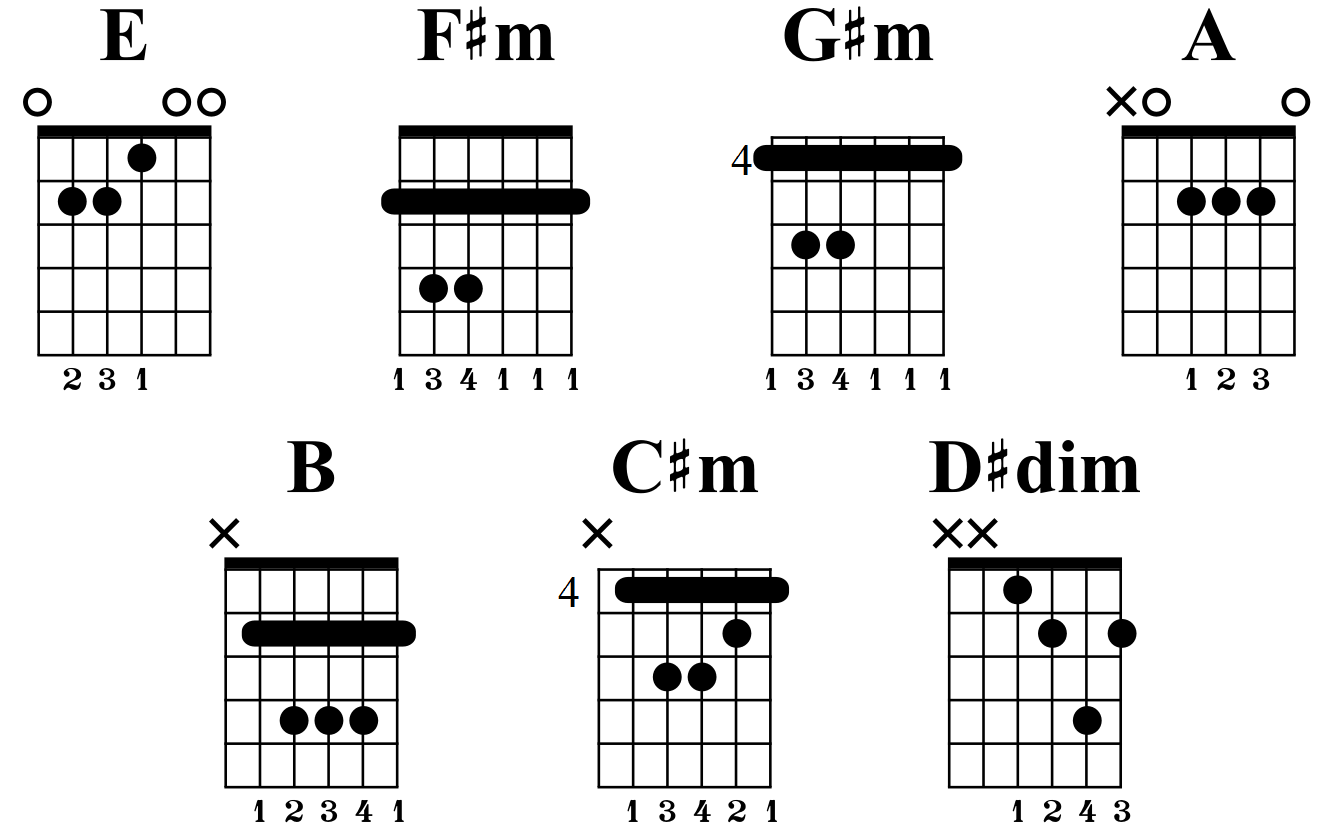
E Major Scale Fretboard Diagrams, Chords, Notes and Charts Guitar Gear Finder
The Key Signature of E Major. Now that you know the E major scale on piano, it also means you know the key of E major. This is great! And something you should remember. The key of E has 4 sharps: F#, C#, G#, D#. You have the beginning of the sharps saying which is Father Charles Goes Down.(The full saying is Father Charles Goes Down And Ends Battle - this is the order of the sharps.)
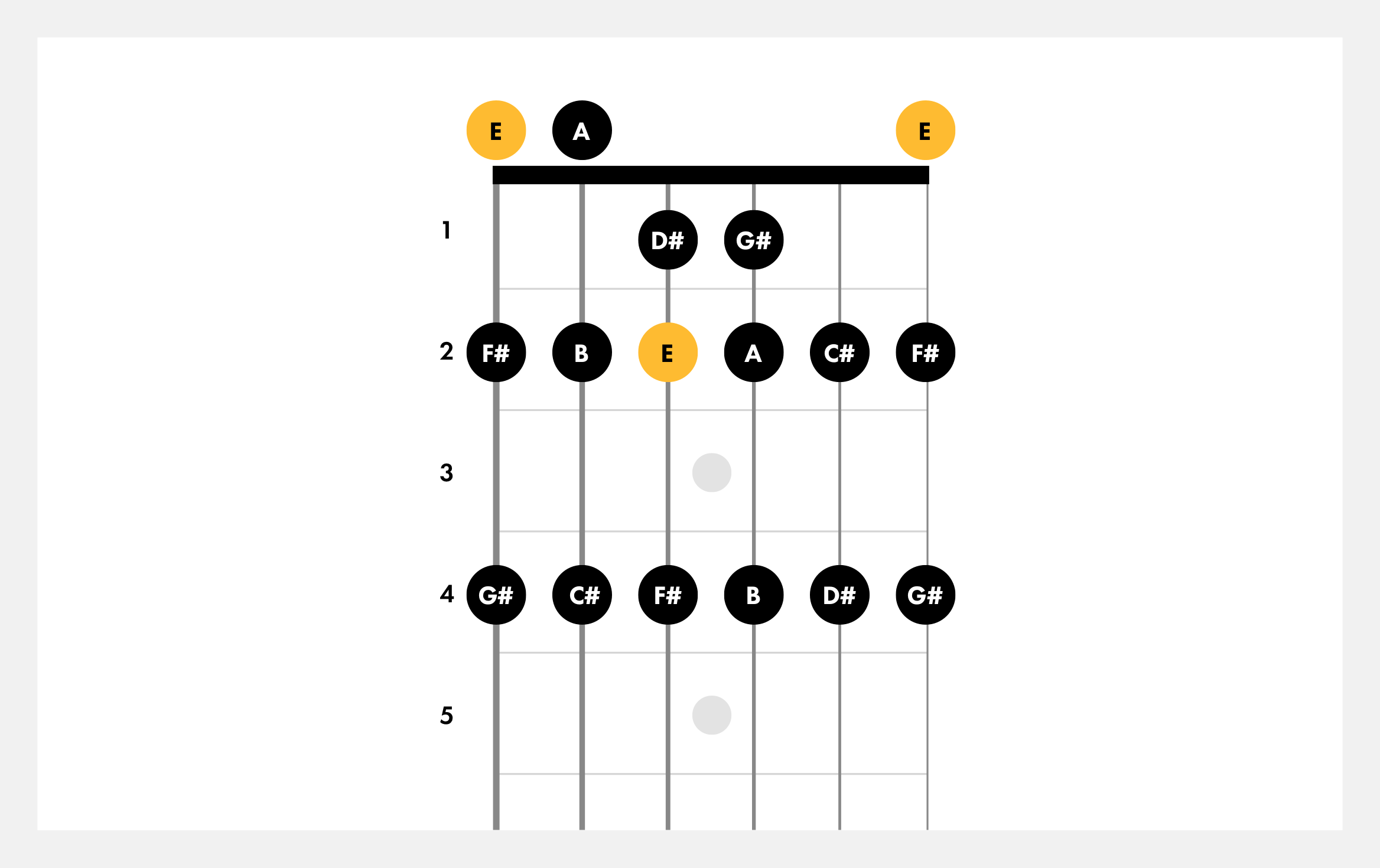
Learn How to Play the E Major Scale on Guitar Fender
The E scale, simply put, is a major scale that both starts and ends on the note "E." It is a scale that is starting to get up there in terms of sharps, since it has 4 sharps and 3 white notes. This doesn't mean you should be scared of it, though! This scale still uses the normal fingerings of the white key majors. What Notes Are In The E Scale?
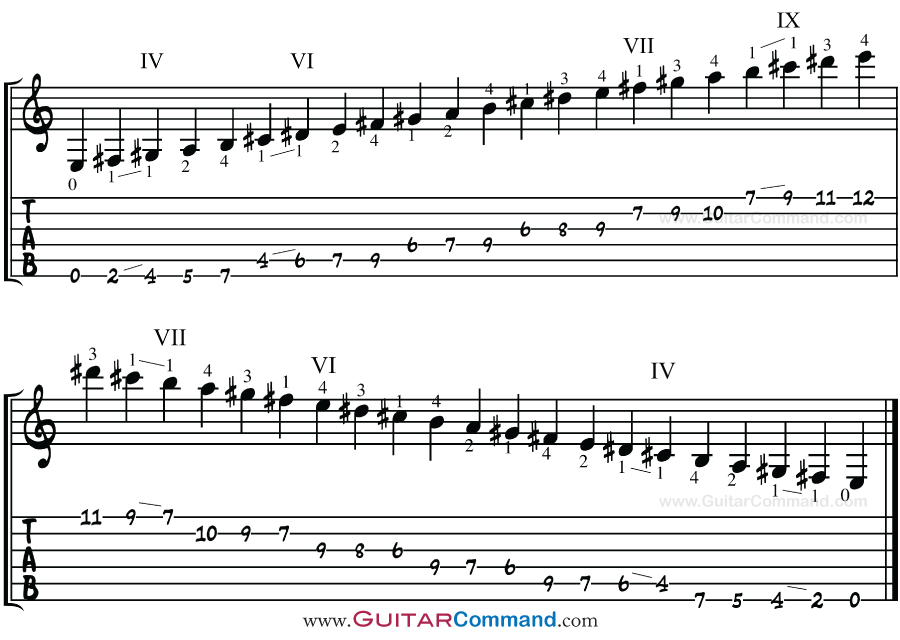
E Major Scale For Guitar TAB, Notation & Patterns, Lesson & Information
Jade has been helping people learn music theory for more than 10 years from pre school children all the way to degree level studies. The E Major scale has four sharps, F#, C#, G#, D#. It's the four sharp major scale in the circle of fifths and its relative minor is C# Minor.

E MAJOR SCALE What is it and How to play it on Guitar
The E Major scale is thought to be one of the most magnificent, noble-sounding, and luminous scales in music. Mozart called E Major "particularly exalted" while Beethoven claimed it sounded "celebratory and religious". It is a guitarist's favorite, as two of six guitar strings are naturally tuned to E so Powerchords and Open chords are often in.

Chord du Jour Dictionary E Major Scale
E Major Scale The notes of the E Major scale are E F# G# A B C# D#. It's key signature has 4 sharps. Press play to listen to the scale. Click the virtual piano or the notation to hear each note. Click the clef symbol to toggle clefs. E A B E F# G# C# D# Explore more scales Sign up for a Berklee PULSE account!

Ibasskung Guitar E MAJOR SCALE GUITAR FINGERING AND TAB
Scale degree chords Tonic - E major Supertonic - F-sharp minor Mediant - G-sharp minor Subdominant - A major Dominant - B major Submediant - C-sharp minor Leading-tone - D-sharp diminished Music in E major Antonio Vivaldi used this key for the "Spring" concerto from The Four Seasons .
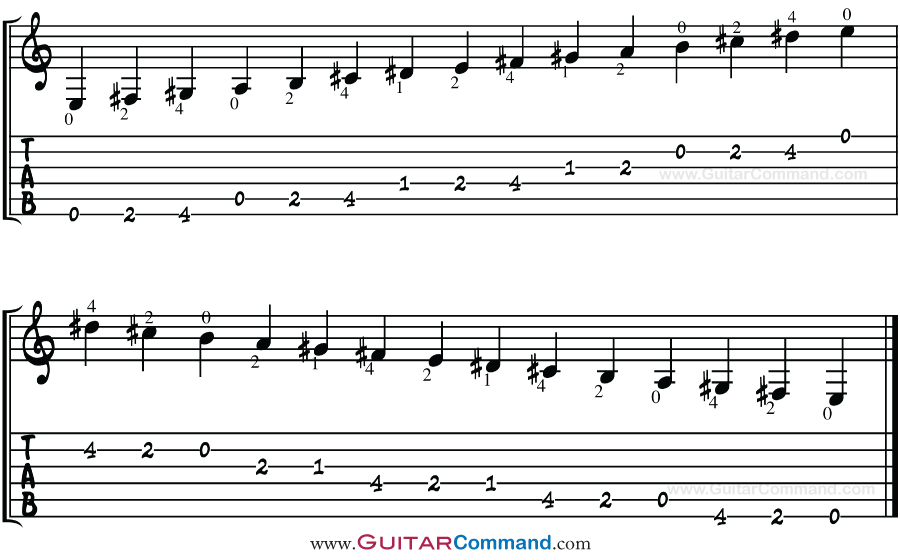
E Major Scale For Guitar TAB, Notation & Patterns, Lesson & Information
The E major scale is a diatonic scale, meaning it consists of seven distinct pitches with a specific pattern of whole and half steps. Notes in the E Major Scale. Here are the notes that make up the E major scale: E (the root note) F# (a whole step from E) G# (a whole step from F#)